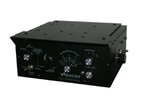Kapo_Polenton
Well-known member
petethorn":2pg5hoej said:Kapo_Polenton":2pg5hoej said:That's why I say take the load type out of the equation. Get the signal right out if the amp with the ISO line out before it even hits the attenuator. This way at least you know you are getting what actually hits a real speaker. That said, I am back to real speaker micing.
But you can't "take the load out of the equation"- just because you put the ISO line out box 1st after the head, the amp still reacts to whatever it's being loaded with, downstream, so to speak... and that affects that line out sound. Even if the line out box is right after the head's speaker out. And it makes a big difference (the load). The difference between a decent reactive load and a resistive load is quite big, your grandma could hear
it.ok, my grandma....
The difference in sound between different reactive loads is also there- kinda like the difference between a V30 and a greenback, it's that noticeable.
Don't take my word for it, test it for yourself- use a hotplate or some other resistive load, and your line out, and record a clip, using an IR in a plug in in your recording program for speaker sound. Then plug in a couple real cabs and each time record the same riff (still using the line out box, pre cab and IR's for speaker sim... The cab is only for loading) listen to how the tone changes, between the resistive load and the different speaker/cabs being used for load.
I will try this.... but I guess that means I wasted my cash on the Suhr line out box because I thought it would be the quiet solution to recording!

